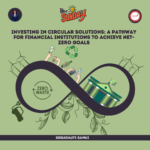Recently, we saw a TV channel in Karnataka, telecasting a program called Helicopter Drop. The channel reported that the central government has planned to drop cash from helicopters all over the country as a relief measure in the COVID-19 crisis. The channel was issued a show-cause notice from Press Information Bureau (PIB) for spreading such misleading information and creating unrest.
All this havoc was caused due to a misconception of the term ‘Helicopter Money’ or ‘Helicopter Drop’.
So, what exactly is it?
Helicopter money basically indicates printing large sum of money. It is an unconventional economic tool carried out by the distribution of newly printed money to recover an economy which is entering recession. The government of a country directs the central bank to increase the money supply by pumping in freshly printed cash, which reaches citizens by direct government transfer in most cases. This, according to many economists, boosts consumer spending, helping the economy to revive (we know that the share of ‘Consumption’ factor in India’s GDP is a whopping 59%). This situation is analogous to a helicopter dropping huge chunks of cash over the public, hence the name.
This is same as ‘Quantitative Easing’, isn’t it?
Well… not exactly! Both ‘Quantitative Easing’ and ‘Helicopter Money’ involves printing a lot of cash. But, in Quantitative Easing, the central bank uses this cash to purchase government bonds. Since bonds are debt instruments, the government is expected to repay the amount at maturity. Whereas in a Helicopter Money exercise, there is no such repayment.
What is the necessity now?
We already had a bleak economic outlook forecasted for this year. With weeks of slumped production due to lockdown and an anticipated stagewise relaxation of lockdown, the economy could be pushed down the cliff.
The government, along with The Reserve Bank of India, is planning for a series of measures. The reduction of interest rates and tax exemptions could benefit the businesses. However, before considering all the economic aspects, we must ensure that there is enough cash in the hands of people who used to rely on daily wages. We must not head to a situation where more people die of hunger than the virus. In that way, an upward push in the money supply seems to be the only option.
While nations around the globe are proclaiming 10-15% of their GDP in the stimulus packages, our actions seem quite modest. In this fight against the novel virus, we are aware that the government has no other choice but to increase its expenditures. On the contrary, the revenue streams are getting slender. This make it obvious that the fiscal deficit is going to take a hit. So, the action of helicopter drop would also be a method of monetizing this deficit.
Great then!! Are there any roadblocks?
The greatest and most obvious risk is that of inflation. With an excess of money flowing in the market, coupled with a stagnant production, could lead to hike in the prices. Also, we are not an economy where the inflation levels are much lower. These conditions increase the danger of a stagflation.
Another potential hazard is the loss of investor confidence due to a devalued currency. Investors may lose their interest in an economy where the currency is not stable, unlike USD or EUR. They will eventually pull out their money out of the system, leading to a worsening fiscal condition. However, India’s G-Secs is not very accessible to foreign investors. So, this risk is mitigable.
There is also a slight risk of citizens not spending the transferred amount. If the beneficiaries choose to pay off debts or save money that have been transferred, there could be a dilution of purpose of boosting GDP.
While analysing all these aspects, we must remember the fact that we do not have many alternatives to choose from. The RBI could either carry on with the ‘Helicopter Drop’ action as suggested by many economists or deal the situation with open market operations. What the government chooses to do is something we have to wait and watch.
Written By – Nagarajan P (Editor, TJEF)














Engaging article ! Good one Nagraj